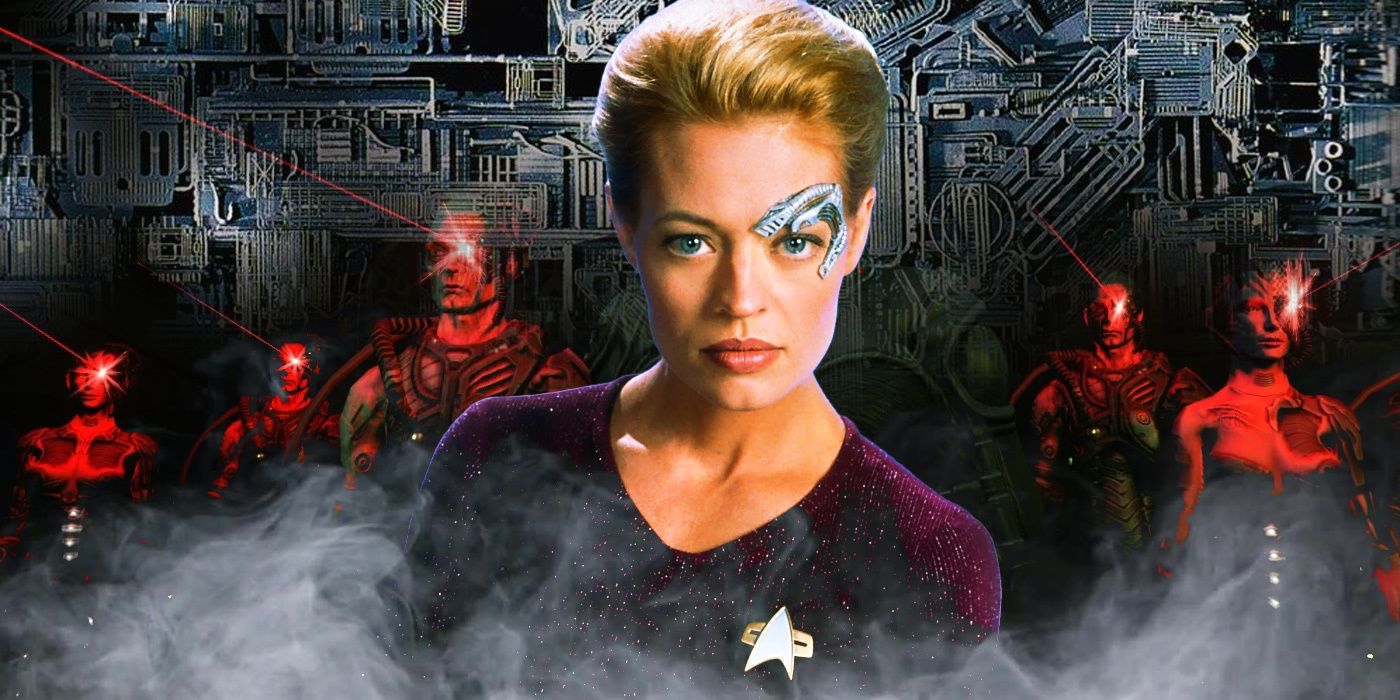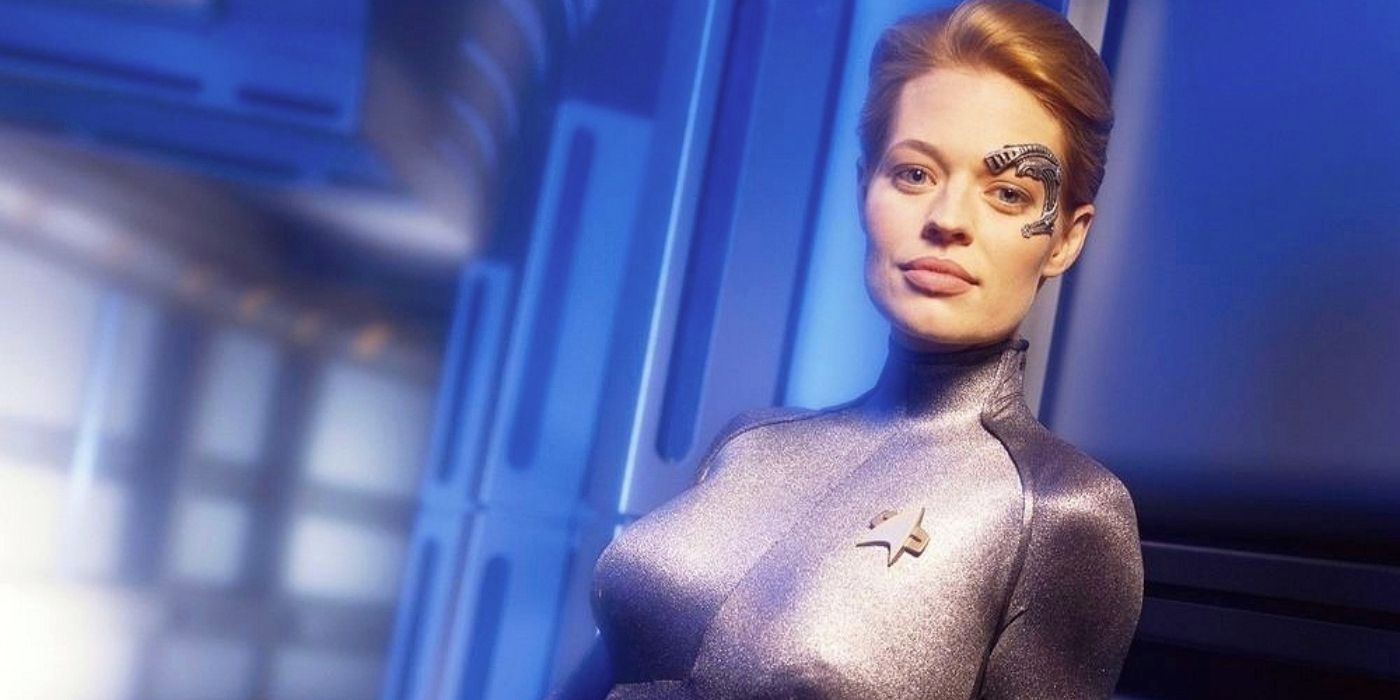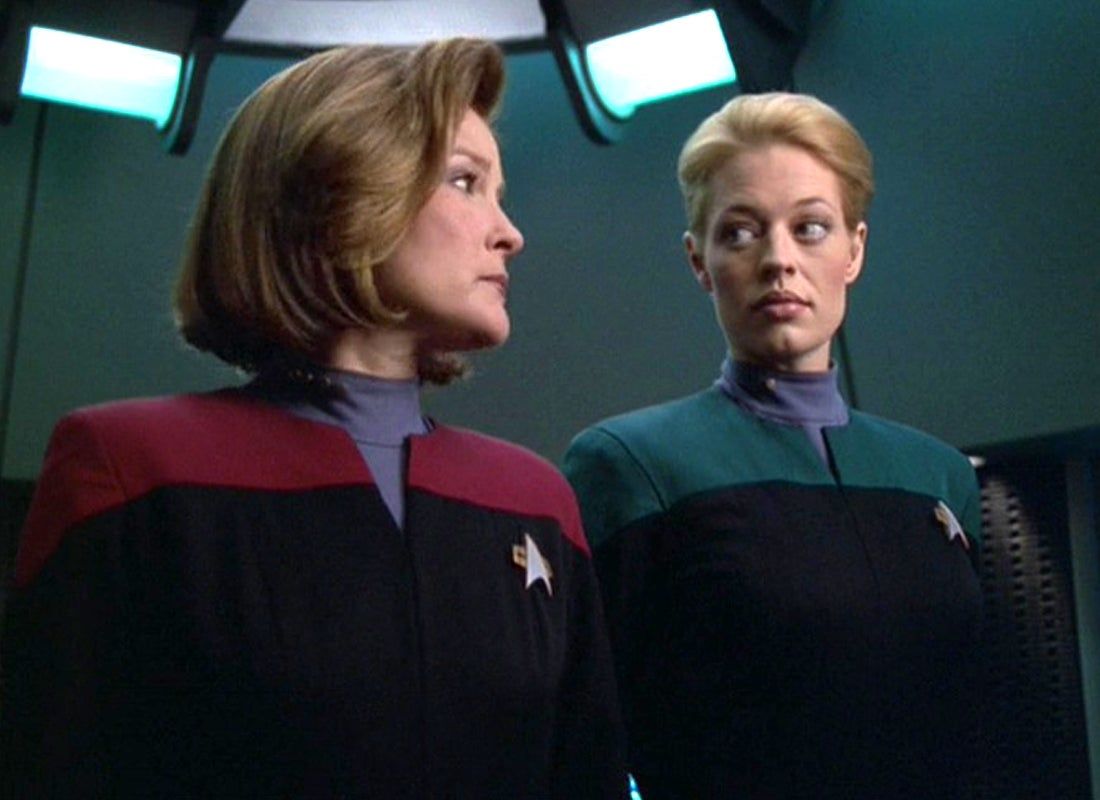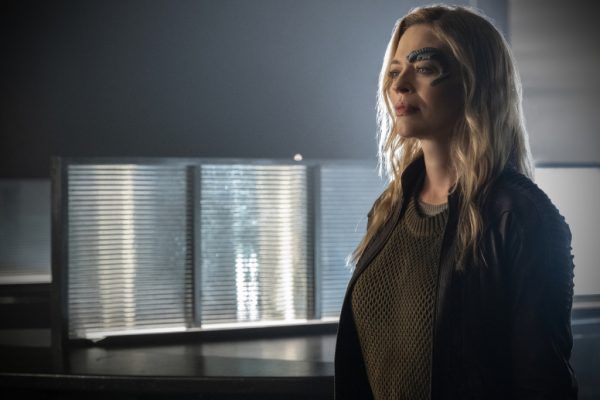Star Trek: Picard is returning for Season 2 and it looks like an old enemy will be returning as well—Annie Wersching will be playing the Borg Queen in the show’s sophomore season. Jean-Luc Picard’s (Sir Patrick Stewart) struggle with the Borg has been—and will continue to be— addressed in Star Trek shows and films. Ever since Q (John de Lancie) hurled the Enterprise into Borg space, these alien cybernetic terrors have plagued Starfleet crews. Picard’s prolonged (and seemingly untreated) PTSD from being captured and assimilated by the Borg were some of the more impactful moments in the first season of Picard. But there’s another member of Picard’s new crew who has an even closer and more traumatic connection to the Borg: Seven of Nine (Jeri Ryan).
Currently a member of the peacekeeping force Fenris Rangers, Seven was introduced in the fourth season premiere of Star Trek: Voyager. Captain Janeway (Kate Mulgrew) and her crew had settled on an alliance with the Borg Collective to eradicate an even greater threat to the Delta Quadrant, called Species 8472. To continue negotiations with them, Captain Janeway had asked the Collective to create a representative, not unlike the time the Borg had transformed Picard into Locutus of Borg. And thus, Seven of Nine, Tertiary Adjunct of Unimatrix 01, entered the scene. Soon after, Seven’s link was severed from the Borg and Janeway took responsibility for her rehabilitation and—for lack of a better word—assimilation into the crew of Voyager.
Seven’s journey to individuality was a difficult one. Since she was assimilated at a young age, the Borg were the only family and way of life that Seven knew. She wasn’t human, nor an individual; Seven was brainwashed into being a drone. As Seven learned more about how she ended up being assimilated, the trauma of her loss was compounded. Annika Hansen was a child when her exobiologist parents decided to investigate the Borg. They took off in the USS Raven with their young daughter and gathered a great deal of research before their luck ran out and all three Hansens were assimilated. Once Seven was liberated, she had to contend with mixed feelings about her parents—she lost them to the Borg, but it was their recklessness that led to their demise. Worse, their foolhardiness meant Seven went through the painful process of assimilation (which she could still remember as an adult) and lost her childhood to the Borg. Seven couldn’t even mourn her parents properly because they weren’t dead, they were part of the Collective.
Freedom from the Borg didn’t mean Seven could close that chapter of her life. She struggled with being alone with only her thoughts. And, because of her cybernetic implants, Seven’s heritage was obvious. Not only did she look different, but Seven belonged to one of the most destructive and hated species in the Federation. The crew of Voyager tried their best not to give her a hard time, but even they couldn’t prevent themselves from being insensitive occasionally. Tom Paris (Robert Duncan McNeill) once referred to her as an automaton, and unfortunately, he did so within earshot of Seven. Despite not meaning to intentionally hurt her feelings, Tom accidentally alienated Seven (not to worry, they had a very professional relationship after that). Young Naomi Wildman (Scarlett Pomers) was terrified of Seven before she eventually became Seven’s protégé. B’Elanna Torres (Roxann Dawson) and Chakotay (Robert Beltran) were distrustful of her, but both mellowed over time. Though B’Elanna and Seven never really got along—they were far too alike—Voyager ended with a glimpse into a romantic relationship between Chakotay and Seven.
While she was with the Collective, Seven’s morality was questionable, at best. Her time on Voyager gave her a brand new perspective on all that the Collective had done, and the part she played in it. Seven may have only been a drone, but she wasn’t blameless, as was apparent in “Survival Instinct” when Seven was confronted with the consequences of one particular act of selfishness while she was Borg. While stranded on a planet prior to her arrival on Voyager, Seven had linked three drones into a mini-hive mind to stop them from defecting from the Collective. It ruined the other three drones’ lives and eventually led to their premature end.
The emotional weight of the Collective’s actions and Seven’s part in them were a recurring theme on Voyager. The Delta Quadrant was Borg territory and the crew met several species who had suffered at their hands. Whenever those species encountered Seven, vitriol wasn’t far behind. When a member of the Caatati species visited Voyager and saw Seven, they verbally attacked her for the Collective destroying their world. In “Hope and Fear”, Arturis (Ray Wise), the last member of his species thanks to the Borg, captured Seven and Captain Janeway and tried to have them assimilated by the Borg. In the absence of the Collective, Seven became an easy target. People vented to her about how they had suffered and stated, either explicitly or not, that she was the cause. At first, Seven was able to brush off these attacks, but the more human she became, the less disconnected she could be from her past.
To make matters worse, Seven’s status as a former drone transformed her into an enigma for the Borg Queen. The Queen saw Captain Janeway as her nemesis because she’d not only liberated Seven but successfully turned her into an individual. If Janeway could do this with one drone, she could possibly do it with others. Seven became a bargaining chip for the Borg Queen’s rivalry with Voyager—in “Dark Frontier”, she set a trap for Voyager to convince Seven to return to the Collective. And even in “Endgame”, it’s Seven whom the Queen torments in her fight against Janeway. The Collective was Seven’s toxic former family who struggled to let her go her own way.
Despite not being a willing party to the Collective’s deeds, Seven tried her best to atone for being complicit in the assimilation of civilizations. She helped start a civil war in Unimatrix Zero, attempted to help alien species and was a loyal, if unpredictable, member of the Voyager crew. And her atonement has continued through to her life as a Ranger and a member of La Sirena.
Seven wasn’t the first human to be liberated from the Borg. The Enterprise crew discovered an injured Borg in the Star Trek: The Next Generation episode “I, Borg”. That Borg, named Hugh (Jonathan Del Arco) by Geordi LaForge (LeVar Burton), would share his sense of individuality with others in the Collective. Hugh appeared in the first season of Picard, but he and Seven, despite their shared experience as xBs (ex-Borg), weren’t given the chance to interact or bond. This was a missed opportunity. As Voyager got closer to the Alpha Quadrant, Seven did wonder how she, a lone Borg, would survive among billions of humans. The Artifact and Hugh would have proved she wasn’t alone, and she deserved to be around people who were familiar with her lived experience.
Of course, it’s also understandable that Seven, on arriving in the Alpha Quadrant, wanted nothing to do with her own kind. Her final act in the Delta Quadrant was to help Voyager destroy the Borg’s connection to Earth. But without these concepts being explicitly explored on the show, we are left with more questions than answers. We did get a sense of Seven’s discomfort with Borg technology, however. Unlike Hugh, who was one of the leaders of the Borg Artifact Research Institute, Seven spent her time gallivanting across the galaxy. On the rare occasion that she has to come in close contact with Borg tech, such as in the Picard episode "Broken Pieces," when Seven had to link herself to the Artifact’s queencell, she was clearly adversely affected by the experience.
But what has Seven’s life been like in the interim? The crew of Voyager stopped seeing Seven as a former drone and considered her a part of their family. Voyager was Seven’s Collective. The crew haven’t been spoken of on Picard, which makes one wonder if Seven prefers being solo—she never asked to be part of the Collective or Voyager, after all. It’s possible she chose a different path altogether. Seven’s relationship with Chakotay clearly didn’t work out, and we know Chakotay returned to the Delta Quadrant, according to Star Trek: Prodigy.
Seven’s character arc has been an exploration of self and identity. It is analogous to many real-world comparisons. Immigrants, expats, and the diaspora can attest to how difficult it can be to identify with the country or people one hails from, while desperately clinging on to the vestige of one’s heritage. Anyone who has been asked an awkward question about their home country will see Seven contending with the flaws of her families—be it her parents or the Borg—as a reflection of their own experience.
Writers have a habit of exploring male characters’ ordeals with nuance and empathy, oftentimes at the expense of their female counterparts. Seven appeared on Picard as a quintessential badass rogue, unflinching in the face of her past traumas. It’s important for the creators of the show to examine how Seven’s past with the Borg has and will continue to affect her future. Now that she’ll be face to face with the Borg Queen once again, Seven’s complicated feelings towards her former family are ripe for exploration.




